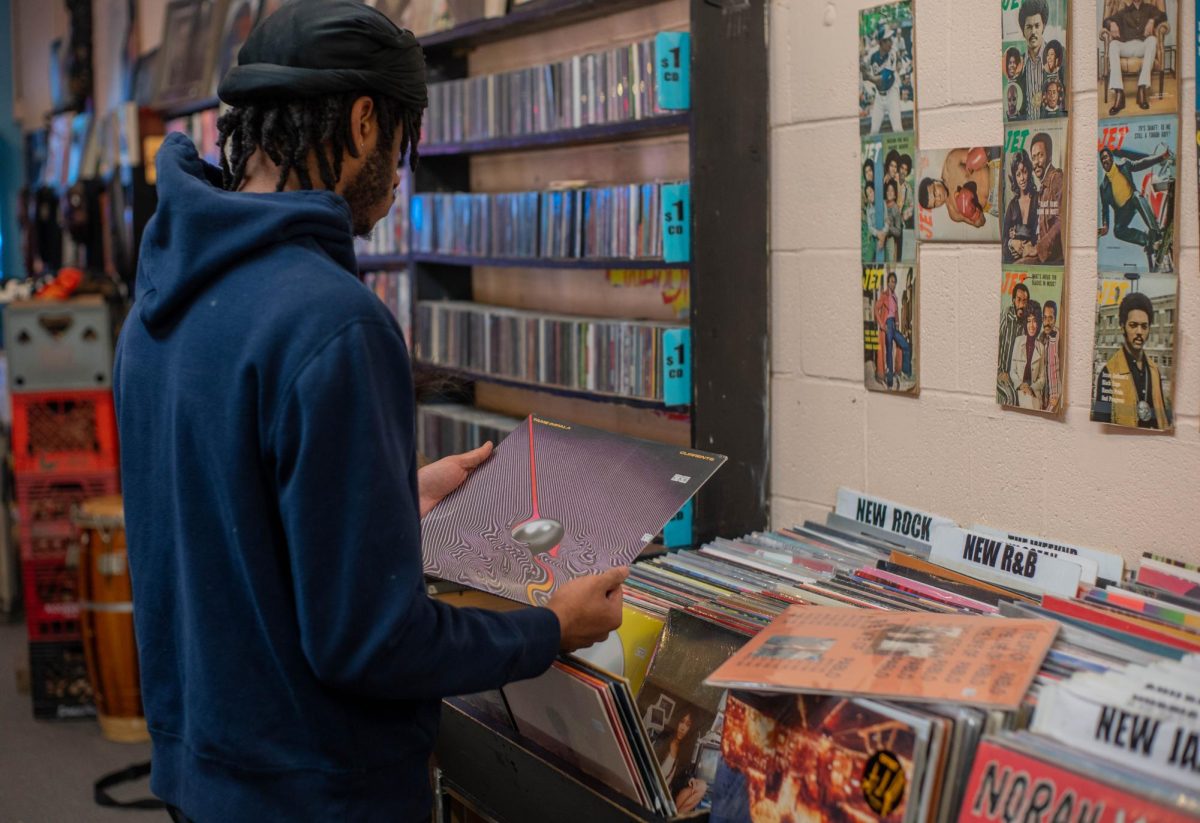The Beatles. The Smiths. Lana Del Rey. Sophomore Carolyn Payne’s vinyl record collection ranges from albums she picks up at thrift stores to ones that she brings back from her grandmother’s home in England.
“I’ll bring one back kind of every time I visit her,” Carolyn said. “I picked up a Smiths album and a Cure album last time I was there.”
With the rise of music streaming platforms such as Spotify, iTunes and Apple Music, the use of physical vinyl records, especially among young people, might seem redundant. Why pay $20-40 for an album you could listen to for free on a smartphone or laptop — not to mention using what can sometimes be an extremely pricey record player? It would make sense to believe that the only records Gen Z would see are in a dusty cabinet in their grandparents’ basement.
But for many teenagers and students at U-High, vinyl records and record players are an intriguing window into old-fashioned lifestyles and a unique way of expressing themselves and their musical tastes. In fact, vinyl album sales comprised 43.4% of all album purchases in the United States in 2022, and the best-selling albums are quite modern, such as Taylor Swift’s “Midnights,” Harry Styles’ “Harry’s House,” and Olivia Rodrigo’s “Sour.”
“I do really like the sound, especially when it comes to certain types of different types of music and genres,” Carolyn said.
“Like Chemtrails Over the Country Club,” she added, citing the Lana Del Rey album. “I love the way that one sounds when it’s coming from right next to me.”
For most students, though, vinyl is not a replacement for streaming services that can be used from a phone or laptop. Carolyn prefers to make an experience out of listening to vinyl, rather than use it for her everyday music. Convenience must still be taken into consideration.
“When I listen to music, it’s usually when I’m doing homework or walking around,” Carolyn said. “And obviously I can’t bring my record player with me.”
After a normal school day, sophomore Adam Tapper has his work cut out for him. Like any high school student, assignments and studying await him, and he knows just the strategy of attack: He puts on a vinyl record and flops onto his bed to begin the long homework process. Like Carolyn and her grandmother, Adam’s father has vinyls that Adam sometimes picks out to listen to.
“My dad still has vinyls, which I do use sometimes, because he still has some of his from when he was a teenager,” Adam said. “But I have a lot of old live concerts caught on vinyl,” Adam said. “Like, I have a 1982 Grateful Dead concert on vinyl, which is pretty cool.”
As with most U-High students who listen to music on vinyl, it doesn’t replace modern music streaming. Like Carolyn, Adam prefers to listen to vinyl when he has enough time to fully enjoy the experience, as opposed to doing it every day. In fact, Adam mostly listens to vinyl music for songs and albums that would be difficult or impossible to find on streaming services or websites.
“I mostly buy physical music that I can’t stream on Spotify,” Adam said, “so, stuff that’s not available to me through streaming services or YouTube. Often, I’m able to find physical copies of the music, and then I can listen to it without having to, like, scour the deepest corners of the internet.”
For Carolyn, vinyl is a journey. Watching a shiny record spin on her player, she smiles, feeling close to her grandmother and, she says, to a time when music was even more precious and appreciated.





















































